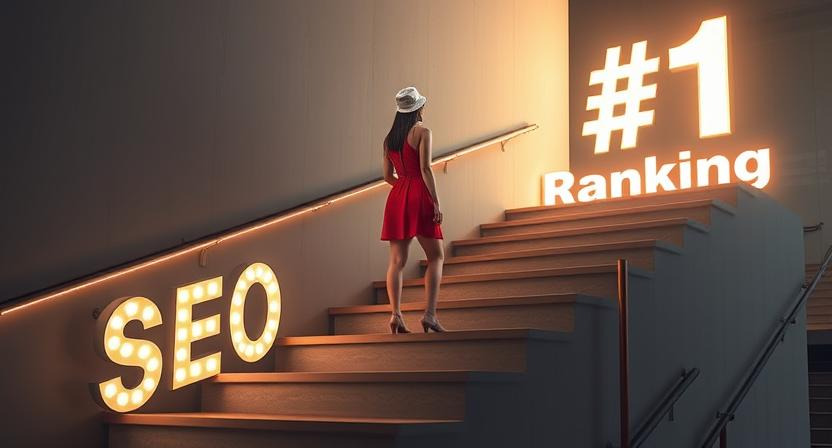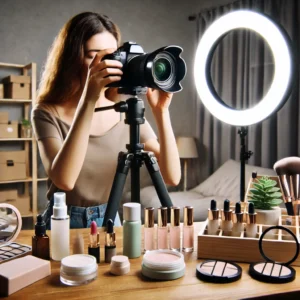Table of Contents
Introduction
In today’s digital world, having a beauty blog is a fantastic way to share your knowledge, showcase products, and engage with a like-minded audience. However, with thousands of beauty bloggers competing for attention, how can you ensure your blog stands out? The answer lies in Search Engine Optimization (SEO).
Optimizing your beauty blog for search engines improves your visibility, increases organic traffic, and helps you rank higher in search results. This guide will cover essential SEO strategies, from keyword research to technical optimizations, ensuring your blog reaches the right audience.
1. Keyword Research: The Foundation of SEO
To optimize your beauty blog, you must first identify the right keywords that potential readers are searching for.
1.1 Understanding Search Intent
Search intent refers to the purpose behind a user’s query. For beauty blogs, intent can be:
- Informational: “How to apply foundation correctly”
- Commercial: “Best foundation for oily skin”
- Transactional: “Buy organic foundation online”
1.2 Finding the Right Keywords
Use SEO tools like Google Keyword Planner, Ahrefs, SEMrush, or Ubersuggest to find relevant keywords. Look for:
- High-volume, low-competition keywords (e.g., “best skincare routine for acne-prone skin”)
- Long-tail keywords (e.g., “how to remove dark circles under eyes naturally”)
- LSI (Latent Semantic Indexing) keywords that are semantically related to your main topic
1.3 Strategic Keyword Placement
Once you’ve identified your target keywords, use them strategically in:
- Blog post titles
- Headings (H1, H2, H3)
- First 100 words of your content
- Meta descriptions and alt texts
- URL structure
2. High-Quality Content: Engaging & Informative
Content is king in SEO, and creating high-quality, valuable posts is crucial for optimizing your beauty blog.
2.1 Writing Engaging and Unique Content
- Focus on original content to avoid duplication penalties.
- Provide practical beauty tips, product reviews, and tutorials.
- Use a conversational tone to engage your readers.
2.2 Formatting for Readability
- Break text into short paragraphs (2-3 sentences).
- Use bullet points and numbered lists.
- Include relevant images, infographics, and videos.
2.3 Keeping Content Fresh and Updated
- Regularly update old blog posts with new information.
- Write evergreen content (e.g., “The Ultimate Skincare Routine for Beginners”).
3. On-Page SEO: Optimizing Blog Elements
Optimizing individual elements of your blog post ensures better ranking on search engines.
3.1 Optimizing Title Tags and Meta Descriptions
- Titles should be compelling, keyword-rich, and under 60 characters.
- Meta descriptions should be concise (150-160 characters) and encourage clicks.
3.2 URL Structure and Internal Linking
- Use short, descriptive URLs (e.g., yourbeautyblog.com/skincare-routine-tips).
- Add internal links to guide users to related content.
3.3 Image SEO: Optimizing Visual Content
- Use descriptive filenames (e.g., best-lipstick-for-winter.jpg).
- Add alt text with relevant keywords for accessibility and SEO.
- Compress images using TinyPNG or ShortPixel to improve loading speed.
4. Off-Page SEO: Building Authority
Off-page SEO focuses on increasing your beauty blog’s credibility and domain authority.
4.1 Backlink Strategy: Getting Quality Links
- Reach out to beauty influencers and guest post on their blogs.
- Get featured in beauty directories and magazines.
- Build backlinks through social media promotions.
4.2 Social Media and SEO
- Share your blog posts on Pinterest, Instagram, and Facebook.
- Use relevant hashtags (#beautyblog, #makeuptips) to increase reach.
- Encourage user-generated content to build engagement.
4.3 Collaborations and Networking
- Partner with beauty brands for sponsored posts.
- Engage with other bloggers through comments and collaborations.
5. Technical SEO: Improving Site Performance
A technically optimized website improves user experience and boosts search engine rankings.
5.1 Mobile-Friendly Design
Since most users browse beauty blogs on their phones, ensure your site is:
- Responsive and adjusts to different screen sizes.
- Loads quickly on mobile devices.
5.2 Page Speed Optimization
- Compress images and use lazy loading.
- Minimize HTTP requests and enable browser caching.
- Use a content delivery network (CDN) for faster loading times.
5.3 Secure Your Website with HTTPS
Google prioritizes secure websites, so install an SSL certificate to switch from HTTP to HTTPS.
6. Local SEO for Beauty Bloggers
If your beauty blog also promotes a local business (salon, spa, or beauty store), local SEO is essential.
6.1 Google My Business Optimization
- Claim and optimize your Google My Business (GMB) profile.
- Add your business name, address, phone number (NAP), and high-quality images.
6.2 Localized Keywords
Use location-based keywords like:
- “Best makeup artist in New York”
- “Top beauty salons in Los Angeles”
6.3 Encouraging Reviews
Ask satisfied clients and readers to leave positive reviews on Google and Yelp to improve credibility.
7. Tracking SEO Performance
Monitoring your beauty blog’s performance helps refine your SEO strategy.
7.1 Using Google Analytics and Search Console
- Google Analytics helps track user behavior, traffic sources, and bounce rates.
- Google Search Console identifies indexing issues and keyword rankings.
7.2 Adjusting SEO Strategy Based on Data
- If certain keywords perform well, create more content around them.
- Improve pages with high bounce rates by enhancing content and UX.
Frequently Asked Questions (FAQs)
1. How long does it take to see SEO results for my beauty blog?
SEO takes time. You may start seeing noticeable changes within 3-6 months, depending on competition and content quality.
2. What are the best free SEO tools for beauty bloggers?
Great free tools include Google Keyword Planner, Ubersuggest, AnswerThePublic, and Google Search Console.
3. Do beauty blogs need backlinks?
Yes! High-quality backlinks from beauty influencers and reputable sites increase domain authority and improve rankings.
4. How often should I update my beauty blog?
Aim for at least one new post per week, and update old content regularly to keep it relevant.
5. Can I rank without using paid SEO tools?
Yes, but paid tools like Ahrefs and SEMrush provide deeper insights, making SEO easier and more efficient.
6. Is social media important for SEO?
Absolutely! Social signals from platforms like Instagram, Pinterest, and Facebook increase blog visibility and traffic.
Conclusion
Optimizing your beauty blog for search engines requires a combination of keyword research, high-quality content, on-page SEO, backlinks, and technical improvements. By implementing these strategies, you can improve your blog’s rankings, attract more readers, and establish yourself as an authority in the beauty industry.
Start applying these SEO techniques today and watch your beauty blog grow!




